An Overview of Supply Chain
Businesses selecting local suppliers can not only fulfill their social responsibility to the community but also reduce the environmental impact resulting from transportation and distribution over long distances. In 2024, more than 96% of GIGABYTEʼs first-tier suppliers were located in Asia, of which 94% were in the areas where our main manufacturing bases are situated. GIGABYTE adheres to local procurement in order to maintain productivity and continuity of operations as well as improve local economic development.
Local Procurement Rate in the Past 5 Years
[Note 1] Local:The sites where materials are produced are in the areas where GIGABYTEʼs main manufacturing bases are located.
[Note 2] Procurement amount:calculate based on the purchase amount of the year.
Supply Chain Management Policy and Risk Management
In 2018, GIGABYTE officially issued the “GIGABYTE Sustainable Procurement Guidelines” which applies to the Headquarters, Nanping Factory, two factories in China, and the subsidiaries with substantial influence in Taiwan. We reference with the “Code of Conduct for Responsible Business Alliance” issued by the Responsible Business Alliance (RBA) as the highest guiding principle. 4 major management aspects (including 15 sub-goals) and 4 zero tolerance regulations are set to assess the risk of a supplier. When selecting suppliers, other than the basic requirements like quality, delivery, service, cost, etc., we also conduct investigations and regulations for environmental management systems, occupational safety and health systems, corporate social responsibility, hazardous substances, etc., to ensure that the chosen suppliers are in compliance with sustainable procurement standards.

4 Management
Product quality, production and manufacturing ability, service, deliver time, price.
ISO 14001, legal compliance, environment management measures.
GIGABYTE Hazardous Substances Management, international standards and regulations of chemicals management
Sustainable supply chain evaluation management system, labor human right, conflict minerals, ISO 45001, corporate ethics.
4 Zero Tolerance Regulations
- Child labor
- Forced labor / prison labor
Discharge of untreated toxic and hazardous substances or materials
Behaviors that cause immediate injury to employees
Download the GIGABYTE Sustainable Procurement Guidelines
Tiered Supplier Management
GIGABYTE adopts tiered management for existing and new suppliers through evaluation in accordance with the “Supplier Quality Management Practices”. After several internal discussions, the tiered supplier management system has finally incorporated into the Enterprise Resource Planning (ERP) system. In addition to the existing criteria such as supplier contracts (CMRT, RBA) and material rating (quality, delivery, cost, and service), it also integrates the supplier sustainability assessment system which has been promoted and implemented since 2012. The new system enables the grading and rating to fully reflect the overall sustainability performance of GIGABYTEʼs suppliers. Moreover, a high CSR-related risk assessment is conducted quarterly, and suppliers rated as D-level will be weeded out. The strategic assessment of suppliersʼ sustainability performance provides assurance of the quality and stability of the suppliers and reduces supply chain risks.
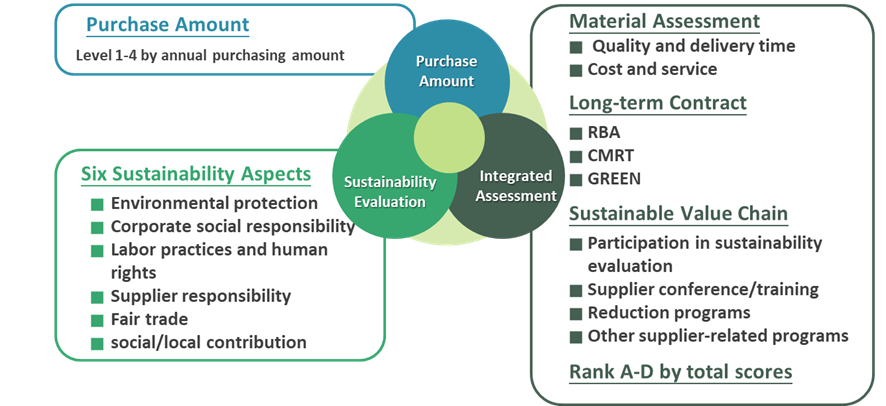
GIGABYTE requires suppliers for “Outsourced Manufacturing and Long-term Supply” contracts to sign declarations guaranteeing their compliance with the “Sustainability Standards in the Environmental, Human Rights, and Social Aspects.” A total of 43 suppliers renewed their contracts in 2024 and 100% signed the declaration. 86% of suppliers also took this a step further by submitting statements on non-use of conflict minerals.
The Ratio of tier-1 Suppliers by Level and the Composition of Key Suppliers in 2024

Supplier Audit
GIGABYTE has established a supplier quality system audit and RBA risk tracking model in response to requirements relating to Group operating risk, stakeholder concern, and sustainability disclosure. The system is being progressively rolled out to BUs and subsidiaries. The results of supplier audits are periodically compiled and reported. An annual audit plan is devised by GIGABYTE and suppliers selected for auditing. Supplier transactions and quality are reviewed on a monthly basis and rolling adjustments made to the audit plan.
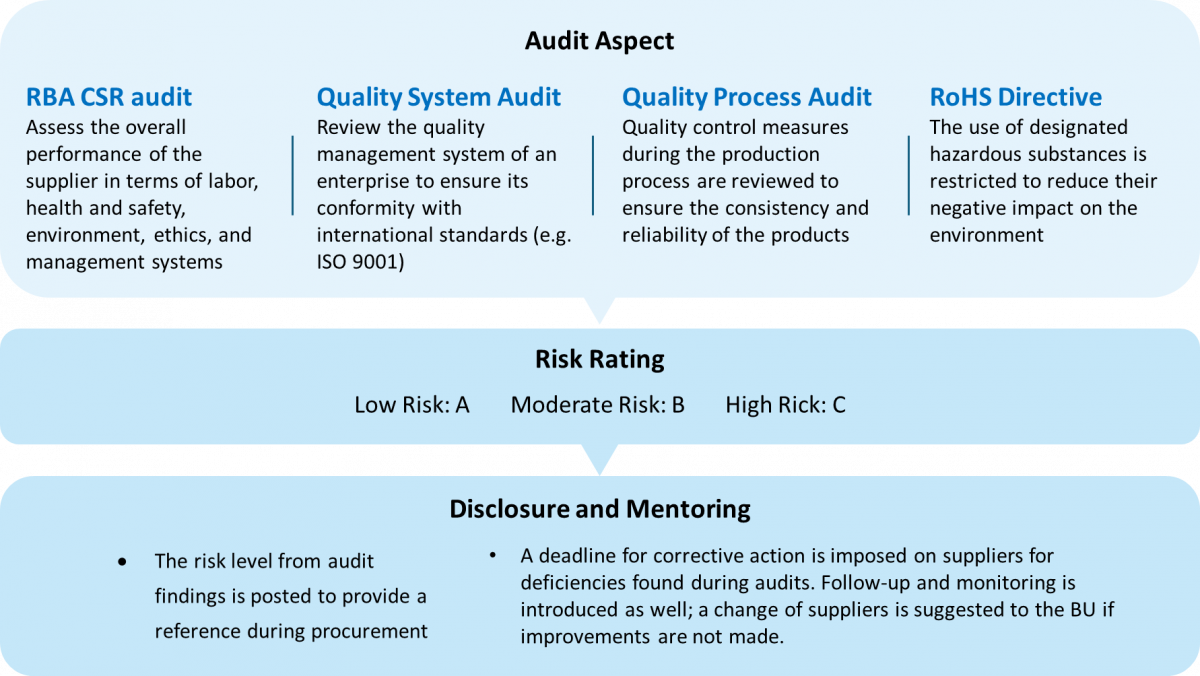
2024 supplier audit findings
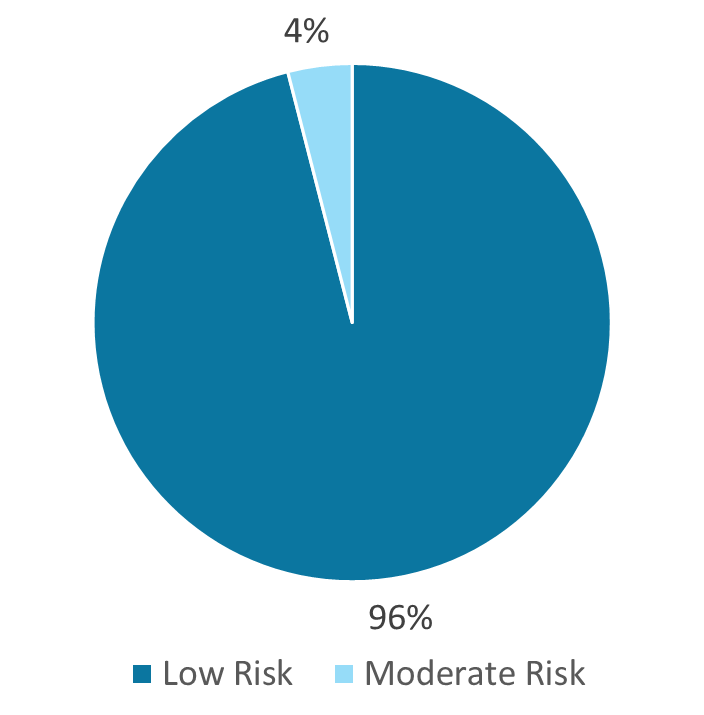
Follow-up improvement and tracking of moderate risk suppliers:
- Major deficiencies: The two moderate risk suppliers were both found to have omissions in their SOP and labels in the “Process Aspect.”
- Improvement and follow-up: Deficiencies were immediately recorded and corrective action required after the first audit. The two moderate risk suppliers were found to have taken corrective action upon re-inspection. Adherence to SOP by operators on the floor improved safety in the work environment. The suppliers were re-classified as low risk after the re-inspection.
High CSR Risk Assessment Mechanism
GIGABYTE conducts supplier high-risk assessments on the four aspects of society, environment, governance, and business every quarter based on the tiered supplier management system. Particular emphasis is placed on sanctions over labor, environment, financial transactions and conflict minerals among level 1 and 2 key suppliers (accounting for 32% of all suppliers in 2024); corporate governance evaluation, scope of ESG disclosure, and positive/negative media coverage are also added to the weighted matrix to identify and screen high-risk suppliers for that quarter. The outcomes are provided to the relevant personnel at each BU and subsidiary to ask for supplier improvements. In 2024, the proportion of high risk suppliers dropped from 31% in Q1 to 1% in Q4. Suppliers that made improvements accounted for 62.9% of all suppliers.
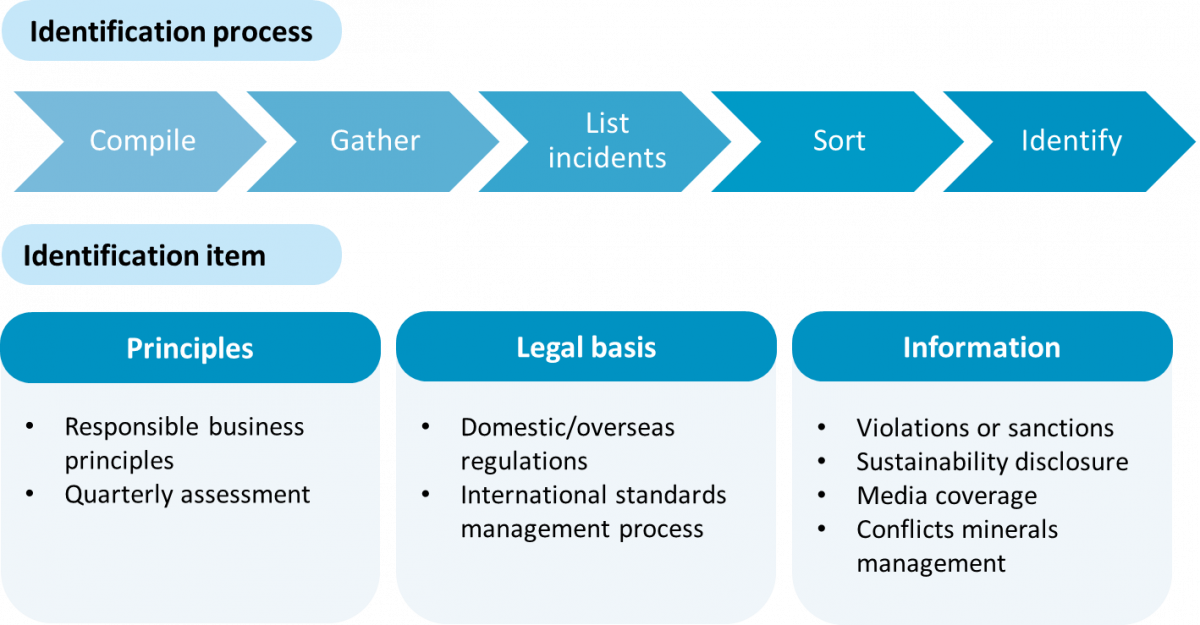
2024 supplier risk assessment result
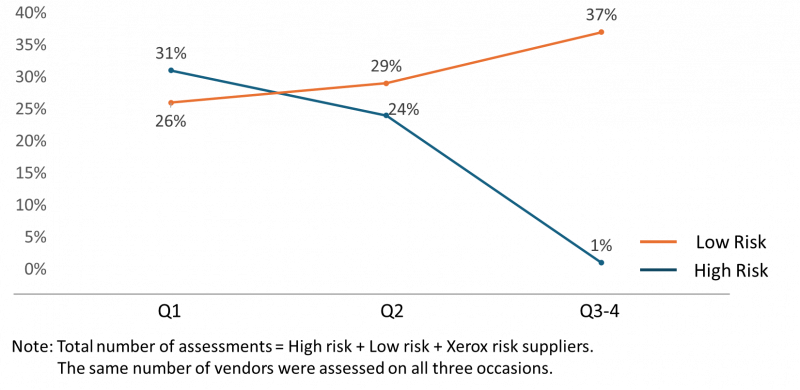
- Home
- Innovation Management
- The Guanxi Blue Zone
- The Ocean is Our Home
- From the Chairman
- Commitment to CSR
- Stakeholder Engagement
- Material Topics
- SDGs
- Corporate Organization
- Code of Conduct
- Information Security & Privacy
- Risk Management
- Supply Chain Management
- Tetralogy of Supply Chain Engagement
- Conflict Mineral
- Environmental Management Policy
- Brand Strategy and Business Reputation Management
- Climate Strategy and Risk Management
- Customer Relations Management
- Eco-friendly Product
- Extended Product Responsibility
- Biodiversity
- Circular Economy
- Green Action
- Sustainability/Environmental Education
- Green Activities
- Working Holiday
- Corporate Volunteering
- Go Green Taiwan
- Make Earth Green Again
- Tree Map
- Overview/Core Concept
- Rooftop Farm
- Ecology Photo Competition
- Sustainability-related Certification
- Diverse and Inclusive Workplace
- Talent Management
- Human Rights Management
- Talent Cultivation and Development
- Occupational Safety
- Health Care
- Upgrade Your Life
- Social Inclusion
- CSR Milestone
- Economic Aspect
- Environmental Aspect
- Social Aspect
- CSR Report
